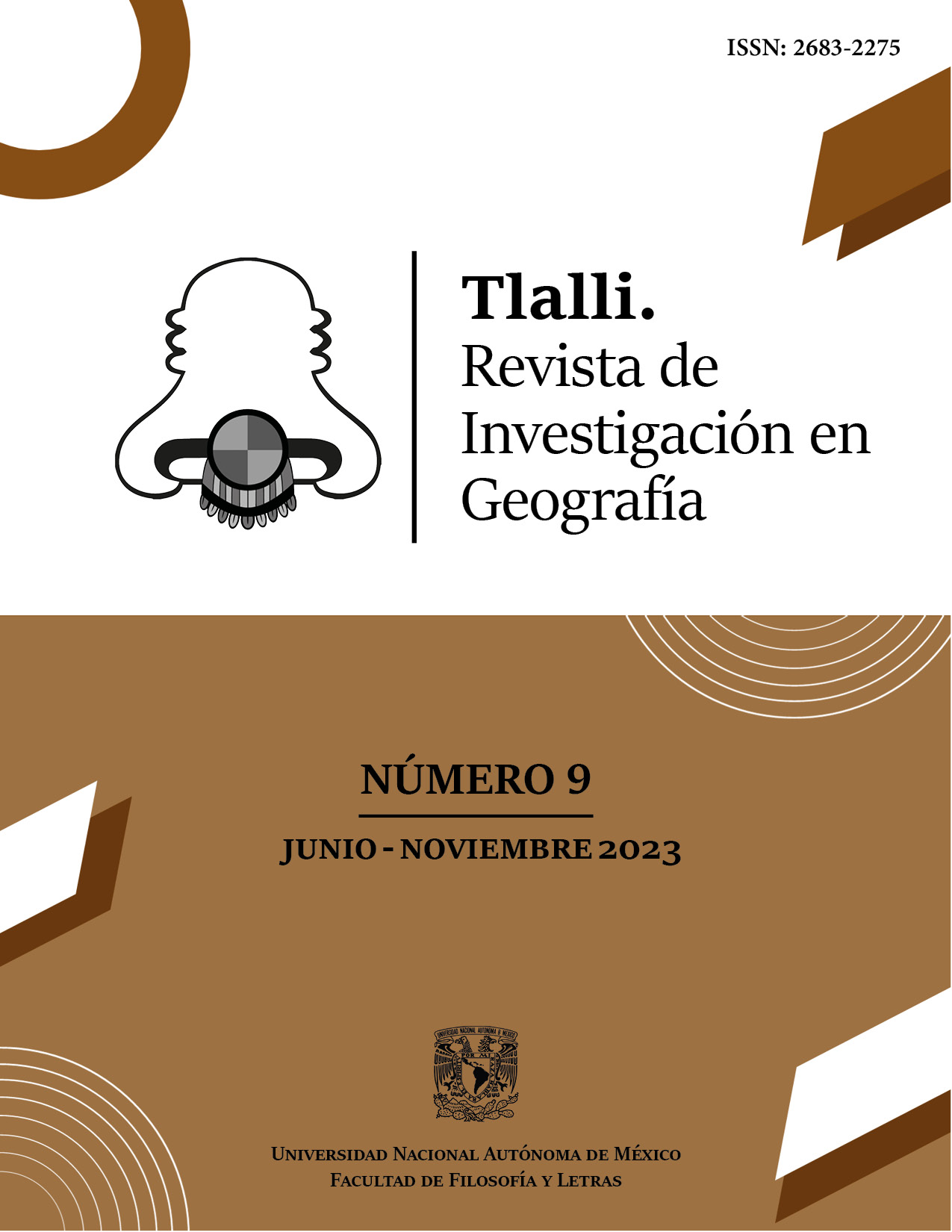Normalization, classification and utility of toponymies through geovisualization and webmapping platforms in Sacatepéquez, Guatemala, C.A.
Main Article Content
Abstract
This study analyses the contribution of standardization (according to the Academy of Mayan Languages of Guatemala) to geo-visualization in a web map. Classifications were made based on the interpretation of standardized toponyms (considering the translation of the place name and the meaning that the communities have given to these places) since, according to Lefebvre and Paredes Martínez, the communities apply their own categories to the territory. The interrelationships between a toponymy and the environment (communities and natural resources) were contextualized and visualized in a web-map and a dashboard. This analysis clarified some of the questions regarding the geovisualization of natural resources and toponymy in Sacatepéquez. On many occasions, the inhabitants of these communities are accused of being ignorant or unprogressive for opposing various development projects (large-scale constructions); however, the importance and meaning that these places have for the communities is not considered, since for them, many places have the category of linguistic symbol. From the sociolinguistic approach of toponymy, deeper inferences were made, applied to the language of the community (in the Kaqchikel Mayan language); involving elements relevant to the description of the territory, which can be nouns, predicates, or verbs. However, project planners ignore the interrelationships between the territory and the inhabitants’ worldview. Currently, many place names are either named in Spanish (a mixture of Maya Kaqchikel and Spanish) or are named entirely in Spanish, using an illogical literal translation.
Article Details

This work is licensed under a Creative Commons Attribution-NonCommercial-NoDerivatives 4.0 International License.
References
Abbot, Jo; Chambers, Robert; Dunn, Christine; Harris, Trevor; Merode, Emmanuel de; Porter, Gina; Townsend, Janet; Weiner, Daniel. (1998). “Participatory GIS: Opportunity or oxymoron? Participatory Learning & Action”. PLA Notes, (33), 27-34. https://pubs.iied.org/pdfs/G01796.pdf.
Arroyo Ilera, Fernando. (2010). “Creciente interés geográfico por la toponimia”. Estudios Geográficos, 71(268), 299-309. https://doi.org/10.3989/estgeogr.0600.
Consejo Departamental de Desarrollo del Departamento de Sacatepéquez. Secretaría de Planificación y Programación de la Presidencia, Dirección de Planificación Territorial. (2010). Plan de Desarrollo Departamental, SEGEPLAN. https://portal.segeplan.gob.gt/segeplan/wp-content/uploads/2022/05/300_-PDD_SACATEPEQUEZ.pdf.
Comunidad Lingüistica Kaqchikel de la Academia de Lenguas Mayas de Guatemala. (2003). Kib’i’ ri Juyu’ Taq’aj pa Qach’ab’äl” (Toponimias de la Región Lingüística Maya Kaqchikel) (Tomo 1). Comunidad Lingüística Kaqchikel de la Academia de las Lenguas Mayas de Guatemala.
Congreso de la República de Guatemala. (2003). “Decreto Número 19-2003”. Diario de Centro América, 1-3. https://observatoriop10.cepal.org/es/media/128/download.
Dunn, Christine E.; Atkins, Peter J.; Townsend, Janet. G. (1997). “GIS for development: a contradiction in terms?”. Area 29(2), 151–159. https://doi.org/10.1111/j.1475-4762.1997.tb00017.x.
ESRI. (2016 ). Introducción a SIG. ArcGIS Resource Center. https://resources.arcgis.com/es/help/getting-started/articles/026n0000000t000000.htm.
García Sánchez, Jairo Javier. (2011). “Los aspectos semánticos de la toponimia”. En Actes de la iv Jornada d’Onomàstica. (pp. 177-188). Acadèmia Valenciana de la Llengua. https://www.researchgate.net/publication/313309079_Los_aspectos_semanticos_de_la_toponimia.
Herlihy, Peter. H.; Knapp, Gregory. (2003). “Maps of, by, and for the Peoples of Latin America”. Human Organization, 62(4), 303–314. https://doi.org/10.17730/humo.62.4.8763apjq8u053p03.
Hernández, Mónica. (2018). Sistematización de la Metodología de Investigación Cartográfica Participativa Aplicada en el departamento de Sacatepéquez: Diagnóstico y Servicios en el departamento de Sacatepéquez, Guatemala, C.A. (Trabajo de titulación,. Universidad San Carlos de Guatemala, USAC). http://fausac.usac.edu.gt/tesario/tesis/T-03577.pdf.
Lefebvre, Karine; Paredes Martínez, Carlos. (Eds.) (2017). La memoria de los nombres: la toponimia en la conformación histórica del territorio. De Mesoamérica a México. (Ed. rev.). Centro de Investigaciones en Geografía Ambiental, Universidad Nacional Autónoma de México. https://www.ciga.unam.mx/publicaciones/images/abook_file/La_memoria_de_los_nombres.pdf.
Rodríguez de Castro, Ayar; Vázquez Hoehne, Antonio (noviembre, 2013). “Nuevas tendencias en el análisis y el tratamiento de la toponimia en el marco de las Infraestructuras de Datos Espaciales” [Ponencia]. IV Jornadas Ibéricas de Infraestructuras de Datos Espaciales. Toledo, España. https://oa.upm.es/26697/.
Solís Fonseca, Gustavo. (1997). La gente pasa, los nombres quedan: introducción a la toponimia. Lengua y Sociedad.

